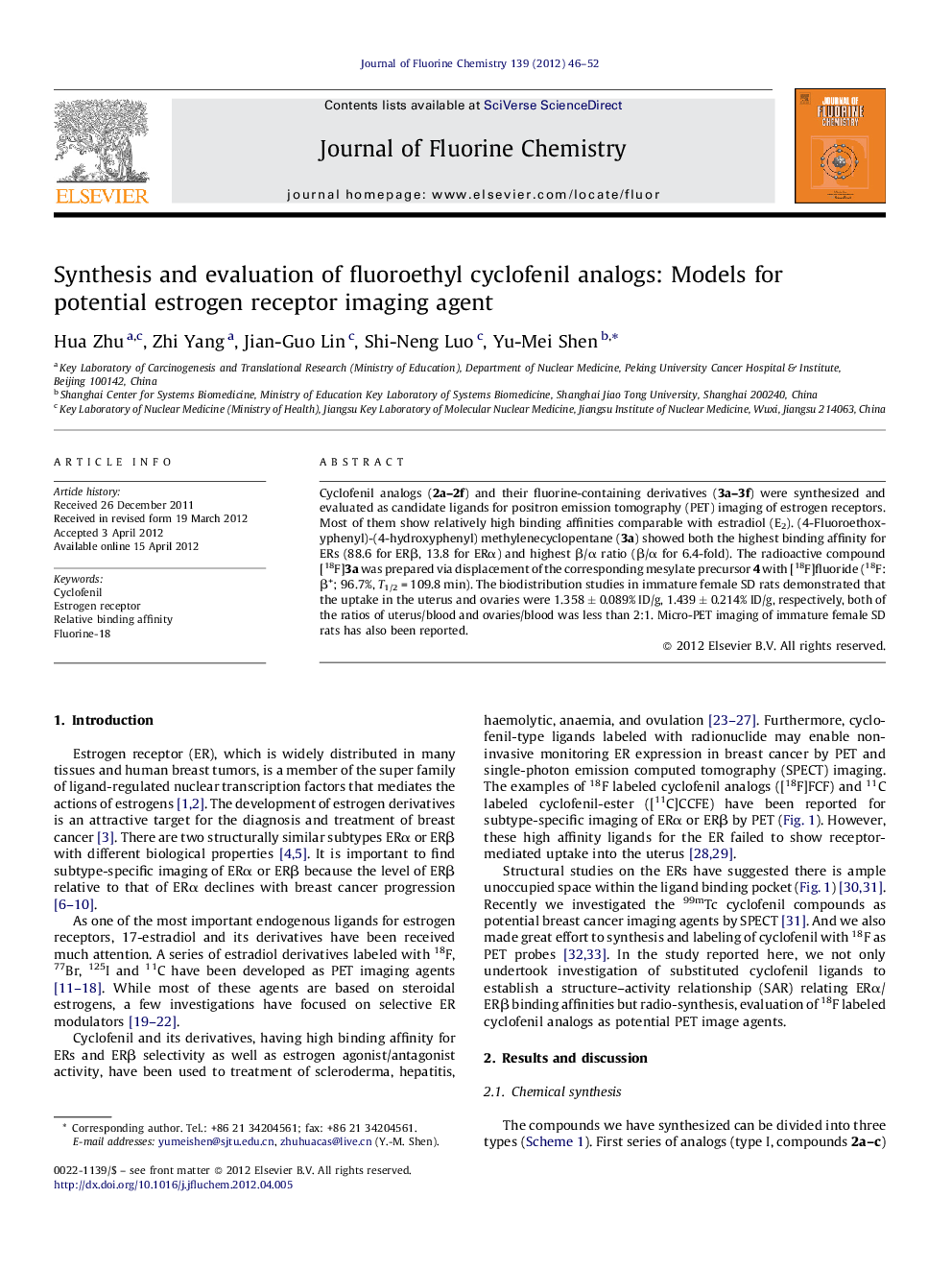| Article ID | Journal | Published Year | Pages | File Type |
|---|---|---|---|---|
| 1314910 | Journal of Fluorine Chemistry | 2012 | 7 Pages |
Cyclofenil analogs (2a–2f) and their fluorine-containing derivatives (3a–3f) were synthesized and evaluated as candidate ligands for positron emission tomography (PET) imaging of estrogen receptors. Most of them show relatively high binding affinities comparable with estradiol (E2). (4-Fluoroethoxyphenyl)-(4-hydroxyphenyl) methylenecyclopentane (3a) showed both the highest binding affinity for ERs (88.6 for ERβ, 13.8 for ERα) and highest β/α ratio (β/α for 6.4-fold). The radioactive compound [18F]3a was prepared via displacement of the corresponding mesylate precursor 4 with [18F]fluoride (18F: β+; 96.7%, T1/2 = 109.8 min). The biodistribution studies in immature female SD rats demonstrated that the uptake in the uterus and ovaries were 1.358 ± 0.089% ID/g, 1.439 ± 0.214% ID/g, respectively, both of the ratios of uterus/blood and ovaries/blood was less than 2:1. Micro-PET imaging of immature female SD rats has also been reported.
Graphical abstractStructural studies on the ERs have suggested there is ample unoccupied space within the ligand binding pocket. Since our previous study focused on the effect of developing Tc-99m cyclofenil complexes for potential SPECT imaging agents. In the study reported here, a series of fluorinated cyclofenil analogs were designed and evaluated for a estrogen receptor imaging agent. These preliminary results suggested that the FEt-cyclofenil (3a) analogs might be potential PET imaging agents.Figure optionsDownload full-size imageDownload as PowerPoint slideHighlights► SAR relating ERα/ERβ binding affinities was established. ► The radioactive compound [18F]3a was prepared in good purity. ► The biodistribution demonstrated relatively high uptake in target tissues.
